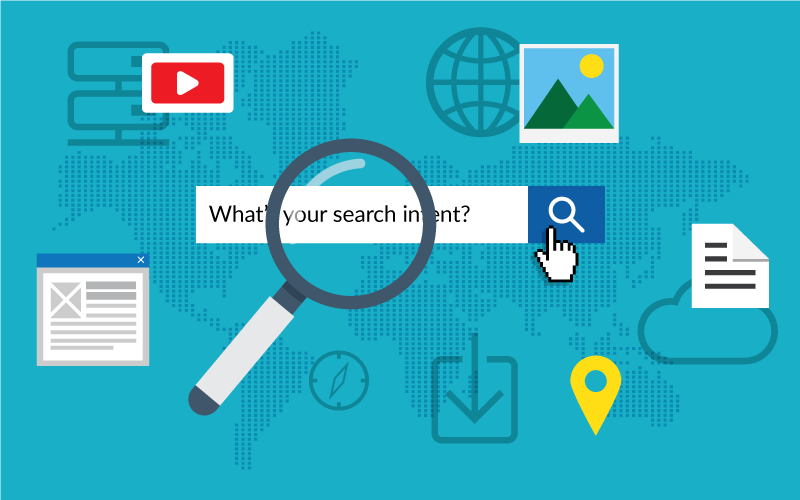Have you ever thought about the reasons behind people’s search queries? The answer lies in search intent!
Search intent refers to the purpose and reason behind a person’s search query when they type something into a search engine.
It is essential for businesses and website owners to understand search intent. Because it helps them create content that meets their target audience’s needs. Let’s discuss the search intent in detail and how to get better rankings in search engines with it.
Types of Search Intent
Search intent can be classified into four categories: navigational, informational, transactional, and commercial.
Navigational Intent is when someone is looking for a specific website or web page. For example, searching for “LinkedIn login” shows an intention to find the login page for LinkedIn.
Informational Intent occurs when people are looking to gather information or learn about a particular topic. Someone searching for “best Halloween dresses” intends on finding recommendations on Halloween costumes.
Transactional Intent arises from the desire to make a purchase. A person searching for “buy gifts online” intends to find an online store where they can buy gifts.
Commercial Intent searches focus on researching and comparing products or services before making a buying decision. Users with commercial intent might look up “best smartphones under $500” or “compare electric cars.”
Understanding different types of search intents is crucial since this enables website owners to create content that aligns with users’ requirements effectively.
Read More- How to Use “People Also Search For” to Drive More Traffic to Websites?
How to Align Your Content with Search Intent?
Hey there! Are you struggling to create content that aligns with search intent? Well, worry no more!
To begin with, put yourself in the shoes of your users. It’s essential to step back from your company and analyze what phrases your users will search for to find your articles or product pages. This exercise helps you understand the intent behind the search and tailor your content accordingly.
Start by typing relevant phrases into Google while preferably using Incognito or private browsing mode for unbiased results. Take a look at the Search Engine Results Page (SERP) and analyze what shows up. Are there content aggregators? Transactional sites? Or maybe a mix of both? Sometimes even Google can’t be sure about a user’s intent, so it displays mixed SERPs with different types of content.
A SERP analysis allows you to see the top positions rewarded by Google and what it thinks is the user’s intent. This competitive data is valuable for creating user-intent-specific content since it will help learn about competitor keywords that show up on top of SERPs.
Remember that even if you have excellent content, unaligned keywords bore unqualified traffic and are a waste of time and energy.
Before creating any new content, conduct keyword and competitive research first. Because these are crucial aspects when creating an effective strategy for catering to user-intent-specific searches.
Competitive research helps you understand your competition on Search Engine Results Pages (SERP). It helps you assess your chances of ranking on page one against them. You can also discover keywords related to your content that will enhance it without having to redo it completely.
When conducting keyword research, it’s best to use funnel-like structures. High search volume doesn’t always mean the keyword is suitable because it may be too vague or have different meanings depending on whether it’s singular or plural. So, you should continuously analyze Google suggestions and use visual representations like funnel-like structures to determine how much and what type of content is needed for each page.
The hub-and-spoke content model is an effective strategy that considers search intent.
It allows the targeting of transactional keywords on hub pages and informational keywords on spoke pages, catering to users at different stages of their journey.
This style will help your website stand out amidst the vast collection available online. Also, it provides optimal user experience by understanding who your target audience really is.
Read More- Google Play Store: Key Statistics To Know in 2023

